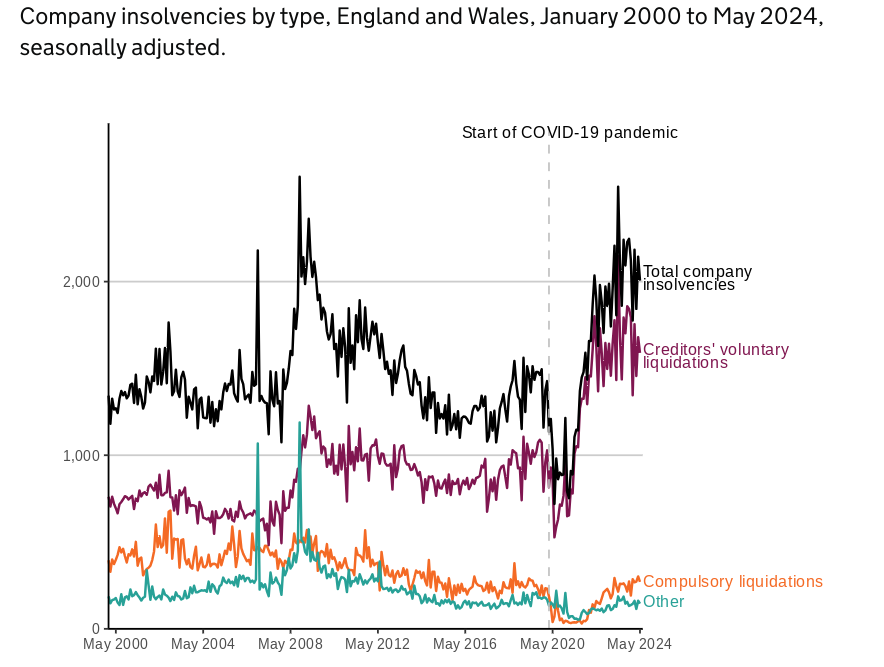Firms still face ‘significant pressure’ despite slight decline in insolvencies

The number of firms’ monthly insolvencies has eased from record highs but remains well above levels just a couple of years ago.
2,006 firms went bust in May, according to official statistics, which was six per cent lower than the month before and 21 per cent lower than May last year, when more firms went under than in any month since October 2008.
However, the Insolvency Service noted that the number of monthly insolvencies remains “much higher” than seen during the pandemic and between 2014 and 2019.
Voluntary liquidations made up the lion’s share of the monthly collapses, with 1,590 recorded in May. There were also 271 compulsory liquidations, 126 administrations and 19 company voluntary arrangements.
The number of firms going bust in the first five months of 2024 was the highest in that period since 2008.
“Company insolvency numbers have been volatile over the past few months, but there is no clear indication of an increasing or decreasing trend,” the Insolvency Service said.
“The plateau over the last few months suggests that while the overall economic environment may have stabilised, the continuing trend of high insolvency figures means many businesses still face significant financial pressure in the current market,” David Kelly, head of insolvency at PwC UK, said.

Gavin Kramer, senior associate at Collyer Bristow, agreed. “The level is still troublingly high compared to the pre-pandemic norm, reflecting the current state of the economy,” he said.
Last year saw the highest number of company insolvencies since 1993, with 25,000 firms going under.
The rise over recent years reflects the difficult economic environment, with firms struggling with a cocktail of high inflation, rising interest rates and sluggish demand.
Although interest rates are likely to start falling in a matter of months, firms will still face financial difficulties. The Centre for Economics and Business Research (CEBR) suggest there could be as many as 33,000 insolvencies this year, surpassing 2023’s 30-year high.
“To see a sustained decrease in numbers, we’ll need to observe a corresponding easing of both interest rate pressure and inflationary pressures. If these factors remain high or continue to rise, we may see further challenges for businesses before any improvement,” John Cullen, insolvency partner at Menzies said.